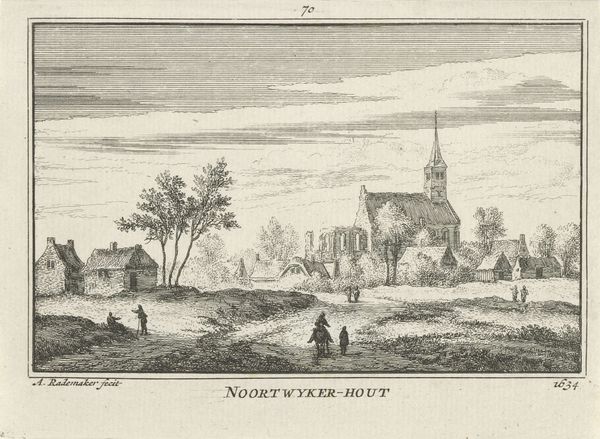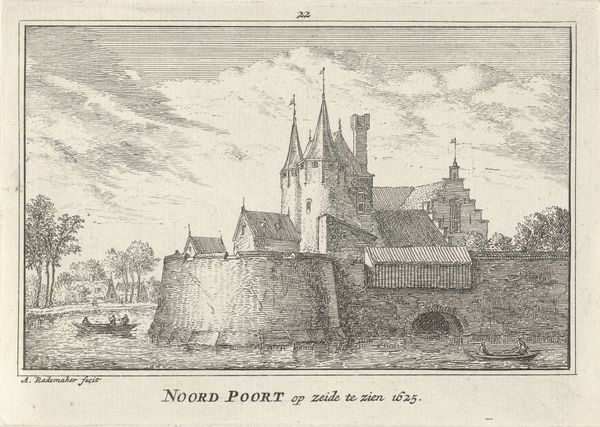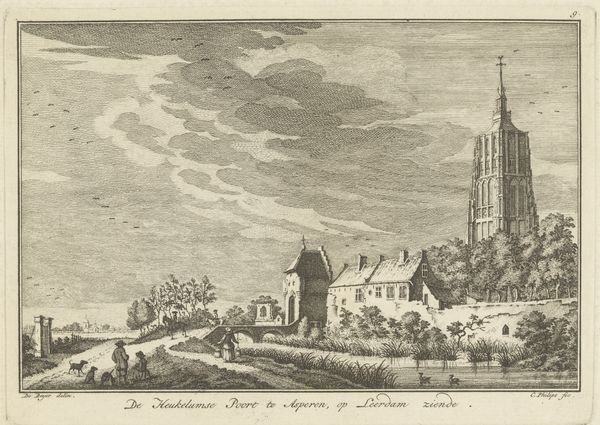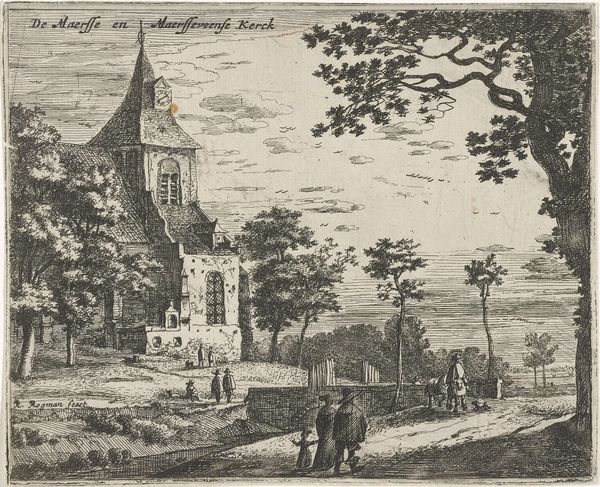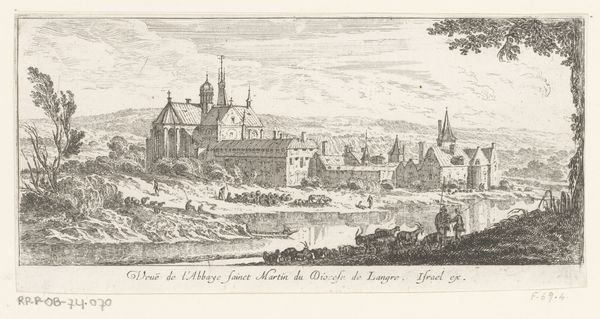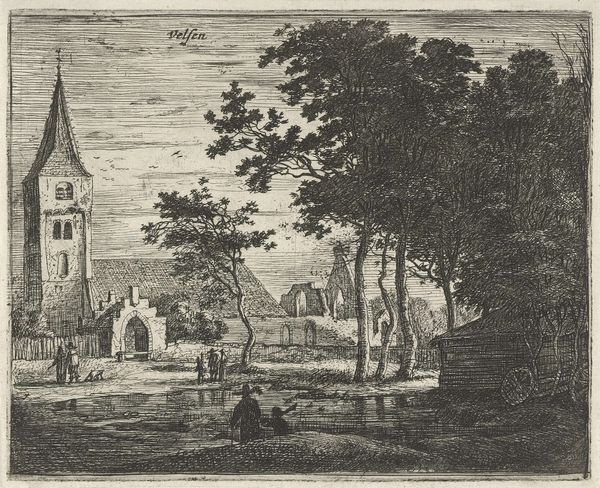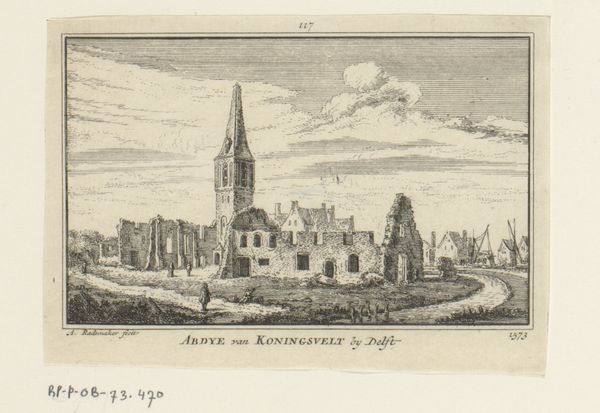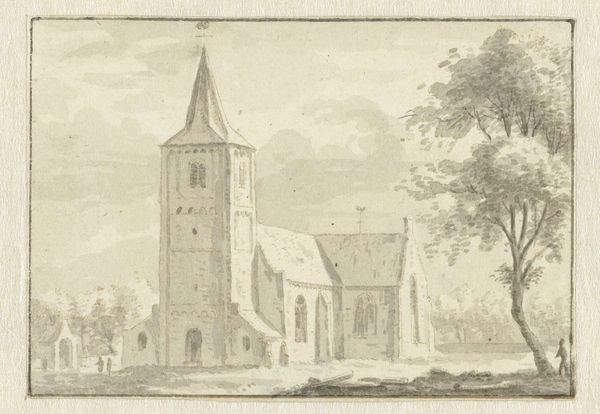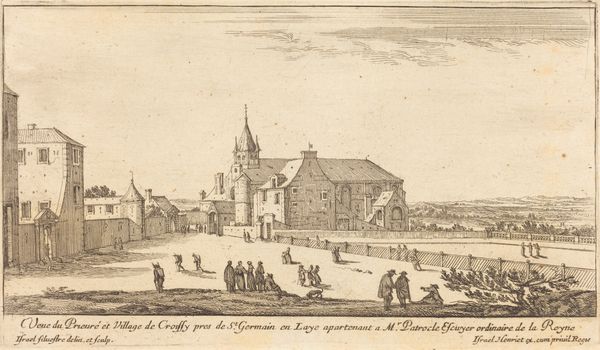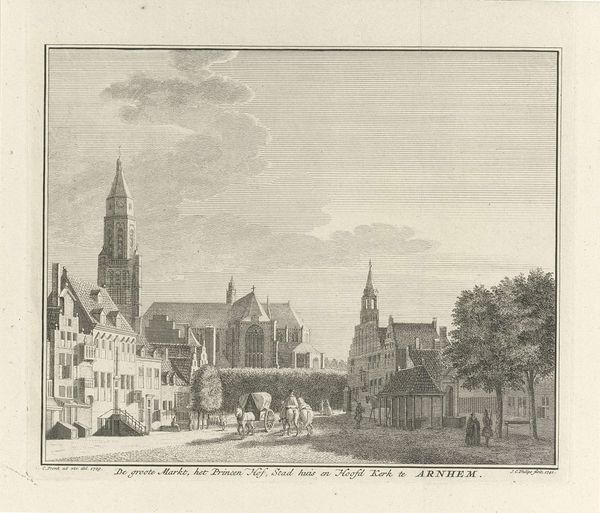
Gezicht op de ingang van de Noorderpoort te Hoorn, 1620 1727 - 1733
0:00
0:00
print, engraving
#
dutch-golden-age
# print
#
landscape
#
cityscape
#
engraving
Dimensions: height 80 mm, width 115 mm
Copyright: Rijks Museum: Open Domain
Abraham Rademaker made this print of the Noorderpoort in Hoorn sometime between his birth in 1675 and his death in 1735, though the writing on the print claims it depicts the scene in 1620. This image offers us a glimpse into the urban planning and social dynamics of the Dutch Golden Age. The Noorderpoort, or North Gate, was not merely an architectural structure but a checkpoint, controlling the flow of people and goods in and out of the city. Notice how Rademaker has depicted various figures – are they merchants, travelers, or local residents? The social conditions of 17th and 18th century Netherlands, with its burgeoning trade and civic life, shaped both the subject and reception of such images. Prints like these played a crucial role in shaping civic identity and collective memory. As historians, we can delve deeper by consulting archival records, maps, and other visual sources to reconstruct the lived experience of those passing through this gate. The meaning of this art is contingent on understanding its institutional and social context.
Comments
No comments
Be the first to comment and join the conversation on the ultimate creative platform.
